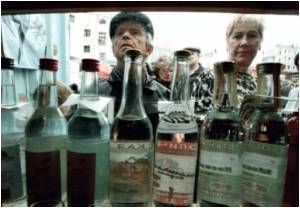Contrary to public perception, glassing incidents, constitute a relatively small proportion of all alcohol-related violence, particularly at licensed venues.

The researchers studied the characteristics of patients presenting to emergency departments (EDs) in Queensland with injuries due to assault with a glass implement ("glassing") and to set this within the broader context of presentations due to alcohol-related violence.
This is believed to be the first Australian paper to present ED injury surveillance data on "glassing" assaults.ED injury surveillance data was collected by the Queensland Injury Surveillance Unit (QISU) between 1999 and 2011.
Violence included interpersonal violence and aggression (verbal aggression and object violence).
Of the almost 5000 (4629) cases, 72% were male, and 36% of them were aged 18-24.
Nine percent of alcohol-related assault injuries were a consequence of "glassing".
Advertisement
The most common glass object involved was a bottle (75%); however, in licensed venues there was an even mix of a drinking glass (44%) and glass bottle (45%).
Advertisement
"Glassing" is a colloquial term, frequently utilised by the media, that refers to a particular type of alcohol-related violence involving assault with a glass implement (typically a drinking glass).
Media reporting of these incidents has received criticism for glamourising the incident and inciting similar violence.
The strategy of removing access to glass in Australian licensed venues is contentious despite limited research suggesting a lower injury risk within "all-plastic" venues.
In 2008 a wide range of restrictions were imposed by the NSW Government on high-risk licensed premises including the removal of regular glassware after midnight.
Research into the efficacy of these restrictions indicated a significant reduction in the number of "glassing" attacks in the seven months following implementation.
These findings are consistent with the steady decrease in the number of "glassings" reported to NSW Police between 2007 and 2011.
This paper highlights the relatively low prevalence and severity of "glassing" incidents among all alcohol-related assaults and highlights the public health burden of alcohol-related violence in the home , Dr Sendall said.
Prevention efforts need to be directed towards social norms associated with alcohol sale and consumption both within and beyond the licensed venue setting, with a particular focus on the emerging drinker (under 18 years).
"Grass roots strategies could include school education programs and engagement with local communities. Broader strategic approaches could use social marketing techniques set within evidence based regulatory reforms."
Source-Eurekalert








